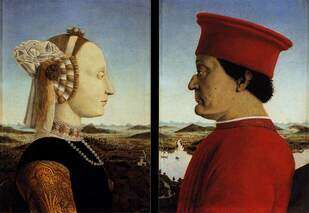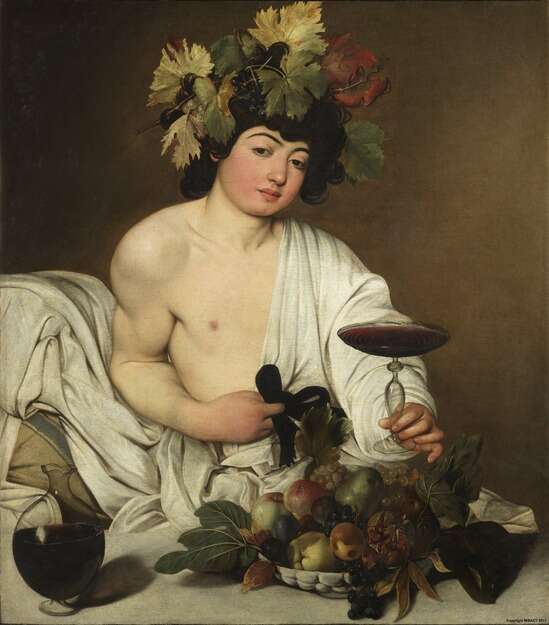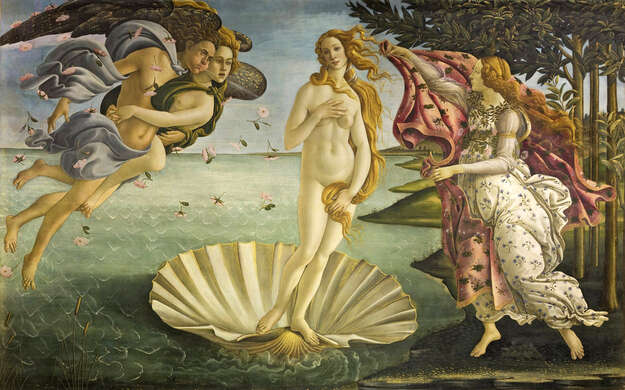Artworks of Uffizi Gallery
The Uffizi is one of the most famous museums in the world. Millions of people flock to Florence to see this amazing museum each year and soak up the history, art and culture. While you can spend hours exploring the halls of self-portraits, paintings, sculptures and much more, we’ve put together a list of the main highlights which you just must check out.
The Uffizi Gallery is a museum in Florence, Italy. It is one of the oldest and most famous art museums of the Western world. It is especially known for its collection of Renaissance art.
The building that houses the Uffizi Gallery was designed by Giorgio Vasari for Cosimo I de' Medici in 1560 as part of a long-term plan to create an art museum. The project was continued by Alfonso Parigi and Bernardo Buontalenti, who completed the building shortly before Cosimo's death in 1574. The gallery had been open to visitors by request since the sixteenth century, and in 1765 it was officially opened to the public.
‘The Birth of Venus’ by Sandro Botticelli
The Birth of Venus is undoubtedly one of the world’s most famous and appreciated works of art. Painted by Sandro Botticelli between 1482 and 1485, it has become a landmark of XV century Italian painting, so rich in meaning and allegorical references to antiquity.
The theme comes from Ovid’s Metamorphoses, a very important oeuvre of the Latin literature. Venus is portrayed naked on a shell on the seashore; on her left the winds blow gently caressing her hair with a shower of roses, on her right a handmaid (Ora) waits for the goddess to go closer to dress her shy body. The meadow is sprinkled with violets, symbol of modesty but often used for love potions.
We can find clear references to the “Stanzas”, a famous poetic work by Agnolo Poliziano, a contemporary of Botticelli and the greatest Neoplatonic poet of the Medici court. Neoplatonism was a current of thought that tried to connect the Greek and Roman cultural heritage with Christianity.
The Neoplatonic philosophical meaning is then clear: the work would mean the birth of love and the spiritual beauty as a driving force of life.
‘Venus of Urbino’ by Titian
This work, completed in 1538 for the Duke of Urbino Guidobaldo II Della Rovere, is very interesting for its many hidden meanings.
It was a gift from the Duke to his young wife. The painting represents the allegory of marriage and was a “teaching” model to Giulia Varano, the young wife of eroticism, fidelity and motherhood. The evident eroticism of the painting, in fact, reminded the woman of the marital obligations she would have to fulfill to her husband. The erotic allegory is evident in the representation of Venus, the goddess of love, as a sensual and delectable woman staring at the viewer who could not ignore her beauty. The light and warm color of her body is in contrast to the dark background, bringing out her eroticism. The dog at the feet of the woman is the symbol of marital fidelity while, in the background, the house maid looking down at the young girl as she rummages in a chest symbolizes motherhood.
‘Portraits of the Duke and Duchess of Urbino’ by Piero della Francesca
The diptych of the Dukes of Urbino is one of the most famous works of art of the Italian Renaissance. Painted by Piero della Francesca, it depicts the duke Federigo da Montefeltro and his wife Battista Sforza.
The duke, leader of mercenaries, skillful strategist and a great patron, turned Urbino into a refined and renowned cultural center. The double profile portraits are reminiscent of the classical portrait medals and gives an ancient solemnity to the two figures. Their busts in the foreground dominate the wonderful landscape in the background, in order to emphasize the majesty of the court of Urbino.
Choosing the representation in profile was an inescapable choice. In fact, the Duke lost his right eye during a tournament and for this reason only the left side of his face is portrayed. His nose was also broken in a tournament.
The Duchess Battista Sforza is richly dressed and has an excessively high forehead, according to the fashion of the time.
‘Bacchus’ by Caravaggio
Michelangelo Merisi, called Caravaggio, is one of the most important artists in the history of Art.
Nervous by temperament, often violent, revolutionary in his way of painting, Caravaggio personifies in every aspect of his eventful life the romantic figure of the damned artist.













